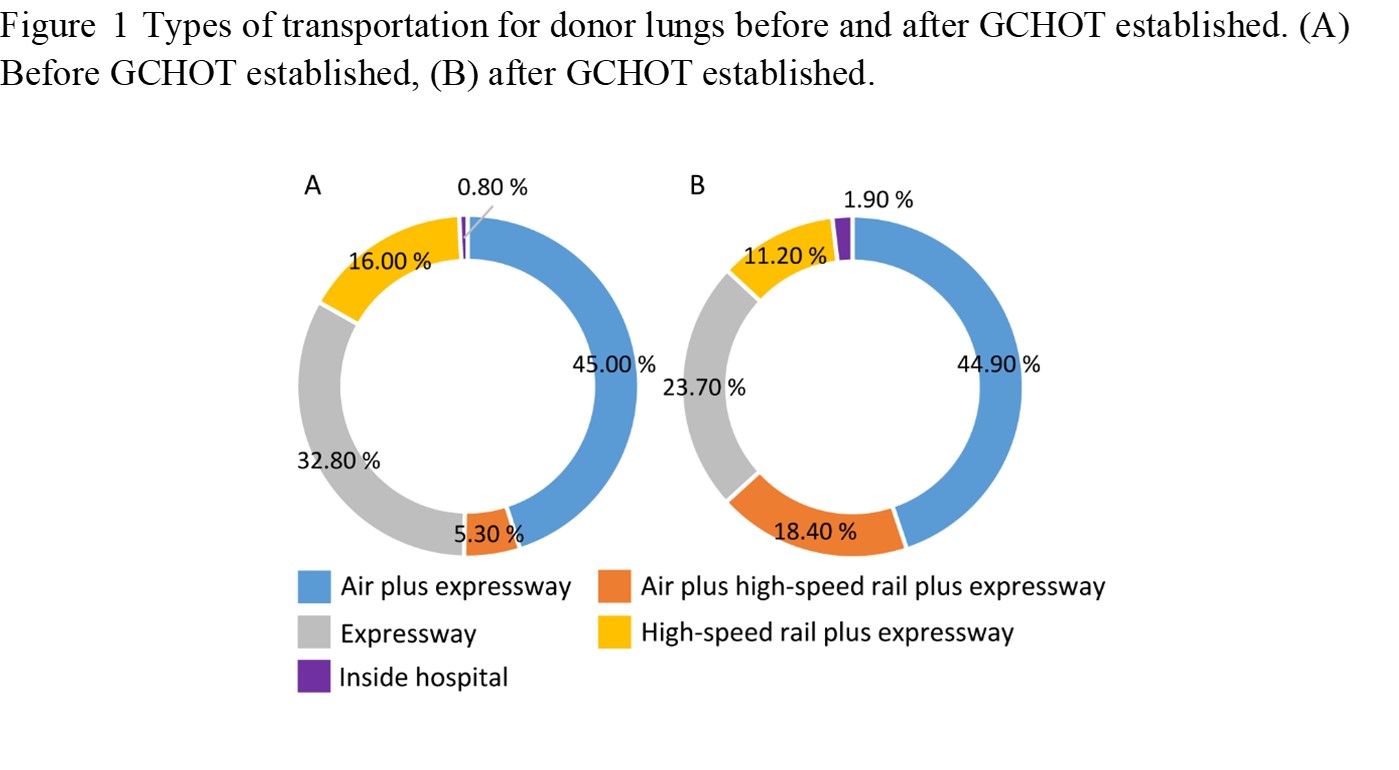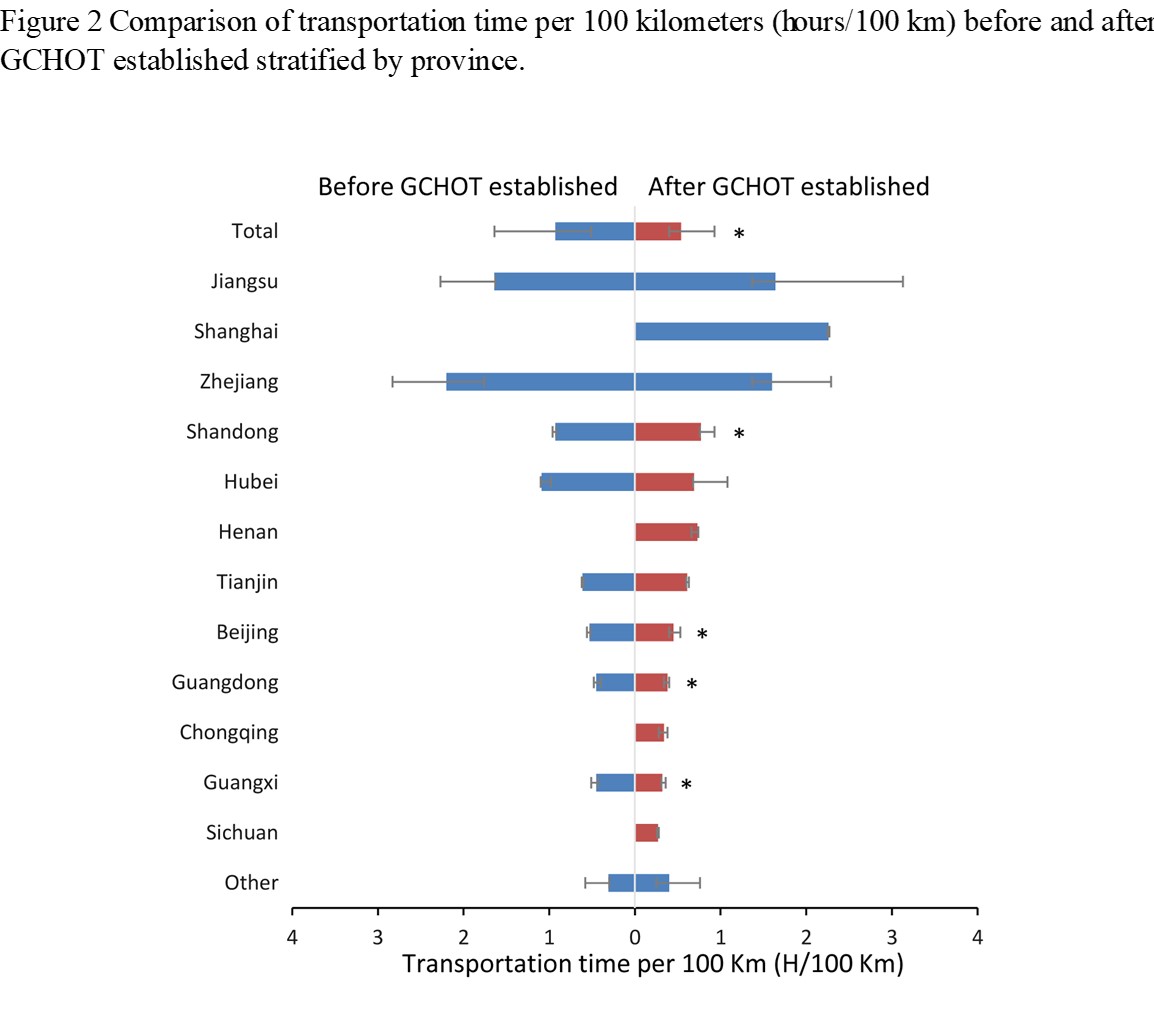Green Channel of Human Organ Transport (GCHOT) Improved the Utilization Rate of Chinese Citizens’ Donated Lungs: A Single-Center Data Analysis
Wuxi Lung Transplant Center, Wuxi, China
Meeting: 2020 American Transplant Congress
Abstract number: B-286
Keywords: Donation, Lung, Lung transplantation, Waiting lists
Session Information
Session Name: Poster Session B: Lung: All Topics
Session Type: Poster Session
Date: Saturday, May 30, 2020
Session Time: 3:15pm-4:00pm
 Presentation Time: 3:30pm-4:00pm
Presentation Time: 3:30pm-4:00pm
Location: Virtual
*Purpose: Lung transplantation in China has been developing for over forty years. Wuxi lung transplant center has the largest lung transplant (LT) volume nationwide. It has been particular from 2015 launching of organ donations after citizen’s death (DCD) program, increment of transplant volume and comparable quality of care progressed but confined by bottleneck of grafts transportation. In order to shorten the ischemic time during transportation, enhance the efficiency of organ usage, the “Green Channel of Human Organ Transport (GCHOT)” was announced on May 6th, 2016. This study aimed to evaluate the effect of GCHOT on donated lungs transportation.
*Methods: We retrospectively collected and analyzed data from Jan 1st, 2015 to Dec 31st, 2018, on donated lungs transported to Wuxi center. Key data including donation source distribution, donor lungs characteristics and transportation time were compared between periods of pre-GCHOT and post-GCHOT.
*Results: GCHOT achieving seamless connection between transport facilitiesIn post-GCHOT period, a total of 208 donor lungs were transported through GCHOT, accounted for 64.80% of all lungs after GCHOT established (Figure 1). The proportion of air transportations (63.24%) post-GCHOT period was higher than that pre-GCHOT period (50.38%) (χ2=20.404, p<0.001), as shown in Figure 1. GCHOT reducing average time cost The overall transportation time per 100 km was decreased to 0.54 hours (IQR: 0.40-0.93) post-GCHOT from 0.93 hours (IQR: 0.51-1.64) pre-GCHOT (Z=5.083, p<0.001). Of the nine provinces involved in using GCHOT (brown in Figure 2), four provinces had shorter transportation time per 100 km in post-GCHOT period. While, of the four provinces were not involved in using GCHOT (sky blue in Figure 2), three provinces' transportation time per 100 km post-GCHOT were not significant different with those of pre-GCHOT period (p>0.05).
*Conclusions: Benefiting from the effective implementation of GCHOT, the number of LT increased rapidly. It was the contribution of GCHOT, that lung grafts in the far-away sites could be procured on time and transplanted to save lives within the minimum ischemic time. GCHOT enhances the referred rate and usage of donated lungs, thus expanding lung donation pool.
To cite this abstract in AMA style:
Chen J, Li X, Hu C, Liu F. Green Channel of Human Organ Transport (GCHOT) Improved the Utilization Rate of Chinese Citizens’ Donated Lungs: A Single-Center Data Analysis [abstract]. Am J Transplant. 2020; 20 (suppl 3). https://atcmeetingabstracts.com/abstract/green-channel-of-human-organ-transport-gchot-improved-the-utilization-rate-of-chinese-citizens-donated-lungs-a-single-center-data-analysis/. Accessed December 27, 2025.« Back to 2020 American Transplant Congress


